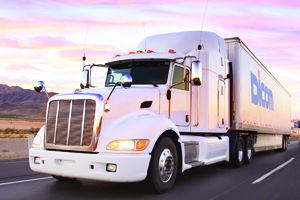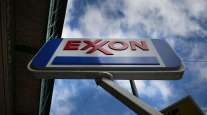Trucking Mergers Slow Down This Year, But Technology Could Spur More Deals

This story appears in the May 30 print edition of Transport Topics.
After boiling over last year with multibillion-dollar deals involving UPS Inc., FedEx Corp., XPO Logistics and others, the 2016 merger and acquisition pot has slowed to a simmer while hungry buyers and sellers keep searching for appealing deals.
Four experts interviewed by Transport Topics agreed on that view of today’s markets for mergers and acquisitions but cited different reasons for the lull.
“The market is not as strong as it was,” said Rob Adams, an M&A executive at Bluejay Advisors. “It was on fire for a long period. When the market was more intense, companies were buying for capacity because there was so much freight. Then it slowed down with the economy late last year and in the first quarter.”
It has been a slow four months, said Andy Schmahl, partner at PwC Strategy & Transportation Practice, after last year’s record transport M&A activity. “The market may be taking a breather before another run.”
He said the underlying factors still are in place to spur activity, such as fleets that have built strong cash reserves because of low fuel prices looking for opportunities to use those funds. Long-term industry consolidation also is a factor, he said.
Schmahl insisted the “market is still very active” in the sense that buyers and sellers are continuing to explore deals.
“The market has clearly slowed somewhat from the peak over the last couple of years,” said John Anderson, advisory director at Greenbriar Equity Group, tying the change to less access to financing.
“The kind of deals we are seeing now are for niche leadership where there is a specific need,” said Ben Gordon, managing partner at BG Strategic Advisors, pinpointing a continuation of the higher level of activity of smaller deals, where the purchase price is $20 million to $200 million.
Gordon agreed that larger deals, valued at more than $500 million, have slowed, in part because of financing issues and because the largest companies have become less active.
Among the Transport Topics Top 100 U.S. and Canadian for-hire trucking companies, the only announced transaction so far this year is No. 92 Dicom Transportation Group’s February addition of Advanced Distribution to expand last-mile logistics capabilities. On a smaller scale, Roadmaster Group Inc. acquired Missouri- based Tri-State Motor Transit.
Dicom’s acquisition program focuses on obtaining courier, less-than-truckload and transportation providers in the United States and Canada. In addition, Dicom is seeking logistics and brokerage providers.
“We are still out looking for strategic acquisitions,” Dicom President Scott Dobak told TT, as the company moves to knit together its businesses that are focused on last-mile and package delivery by acquiring a linehaul capacity provider in an asset-light or brokerage structure. During 2016, Dicom also is looking to build out its U.S. small-package network and pursue third-party logistics acquisitions.
By comparison, No. 1 UPS last year bought Coyote Logistics for $1.8 billion, and No. 2 FedEx allocated $6.2 billion to acquire logistics provider Genco and TNT NV, a Dutch package company, to fill out both giants’ suite of service packages. No. 14 XPO spent even more, $6.53 billion, to buy Con-way Inc. and French company Norbert Dentressangle, capping a string of acquisitions to build a brokerage, trucking, logistics and last-mile network.
This year, Bradley Jacobs, CEO of XPO, made it clear the company will not pursue M&A deals while concentrating on improving profit and integrating its offerings. Other companies that have been active M&A participants also have stepped back from the market. They include Echo Global Logistics, Roadrunner Transportation Systems and Celadon Group.
Echo ranks No. 35 on the Transport Topics Top 50 list of the largest logistics companies in North America. Roadrunner and Celadon rank Nos. 17 and 42, respectively, on the for-hire TT100.
While completed M&A transactions are few so far this year, all four experts said technology, in multiple forms, likely will be a key factor when the market takes off again.
Logistics companies, Adams said, “need leading-edge technology to play in this space. If not, they will fall by the wayside.”
Companies that have adopted the latest transportation management systems and driver- focused technology will make themselves more attractive to sophisticated investors, such as private equity companies.
“Private equity firms want businesses that they can scale up,” Adams said. “If you don’t have the technology platform and processes, people won’t be interested in you.”
Greenbriar’s Anderson focused on a related technology development: the emergence of e- commerce and omnichannel strategies for delivering consumer goods, whose providers have emerged as a key part of today’s M&A market because of swift growth in online retailing.
“Those sectors are really big,” Anderson said. “Companies are looking for an early start. The investments are more speculative than other deals. It may be riskier to buy into those companies, but if you don’t buy into those markets, you will miss a trend.”
Gordon also emphasized the rise of technology-driven new entrants that do last-mile deliveries and others that bill themselves as “Uber for trucking.”
Investors have pumped money into those startups, he said, knowing that some of those companies will succeed, though most will fail.
Gordon identified another technology factor. Internet Truckstop Group has diversified into new businesses, which has attracted investor funding, he said.
Trucking and logistics companies as well as their customers crave technology to monitor freight location, routing and other services to better meet mutual expectations, Schmahl said.
The result is a battle that is being waged between those who have stuck with the tried and true approaches of the past, such as moving data using pneumatic tubes and paper, and what Schmahl termed “a new breed of transportation executive” seeking to disrupt traditional approaches.
Those executives are challenging the old rules, trying to find new ways to use technology to manage personnel and assets.
Technology also could play a major role on the M&A front as companies prepare for mandatory use of electronic logging devices late next year.
“We are hearing more examples of carriers putting themselves up for sale as both large and midsized buyers are seeing an influx of M&A opportunities,” said Thom Albrecht, an analyst at BB&T Capital Markets. “One problem is that many carriers putting themselves up for sale are not ELD-compliant, a deterrent for most buyers.”
Bluejay’s Adams said fleets that don’t have electronic logs will have to find themselves a partner, sell out or fail.
Anderson took a somewhat different view.
Large, well-capitalized companies that already have that equipment should be insulated from that scramble, he said.
The outlook for smaller companies that don’t have the equipment is questionable, he said, because it’s not yet certain how much the lack of the ELDs will have on the smaller fleets’ attractiveness to potential buyers.
There is one other technology- related factor in the M&A market: Amazon.com’s well-known move to build its own distribution network.
Gordon said some parts of Amazon’s strategy are clear, such as its acquisitions of stakes in Atlas Air Group and Air Transport Services Group to ensure air cargo capacity. Amazon also has shown clear commitment to building its own e-commerce and fulfillment network, including infrastructure. It also has secured ocean freight forwarding by purchasing a Chinese company, he said.
However, Gordon believes it is “somewhat unlikely” that Amazon will buy a truckload carrier. That’s because the company’s tendency is to pursue more scarce assets, such as airfreight capacity, rather than businesses such as truckload freight, where resources are abundant, and resources can be secured without purchasing them.
Two other factors are at play in today’s M&A market.
One is driver demographics. Strategic buyers still are looking for the right capacity matchup, Anderson said. Asset-based companies still can be attractive because of the driver shortage.
“Because there is a shortage, there continues a real premium on securing drivers,” he said. “You may see more buyers to get the driver assets.”
One prominent company that recently has used that approach is Celadon Group.
The other factor is sourcing changes.
Anderson said there also is potential for more crossborder M&A acquisitions because world sourcing patterns are moving away from past reliance on moving products from China and other Asian countries. In today’s market, Anderson said, companies’ desire to deliver across international borders in all directions could spawn acquisitions of firms that fulfill that need.




